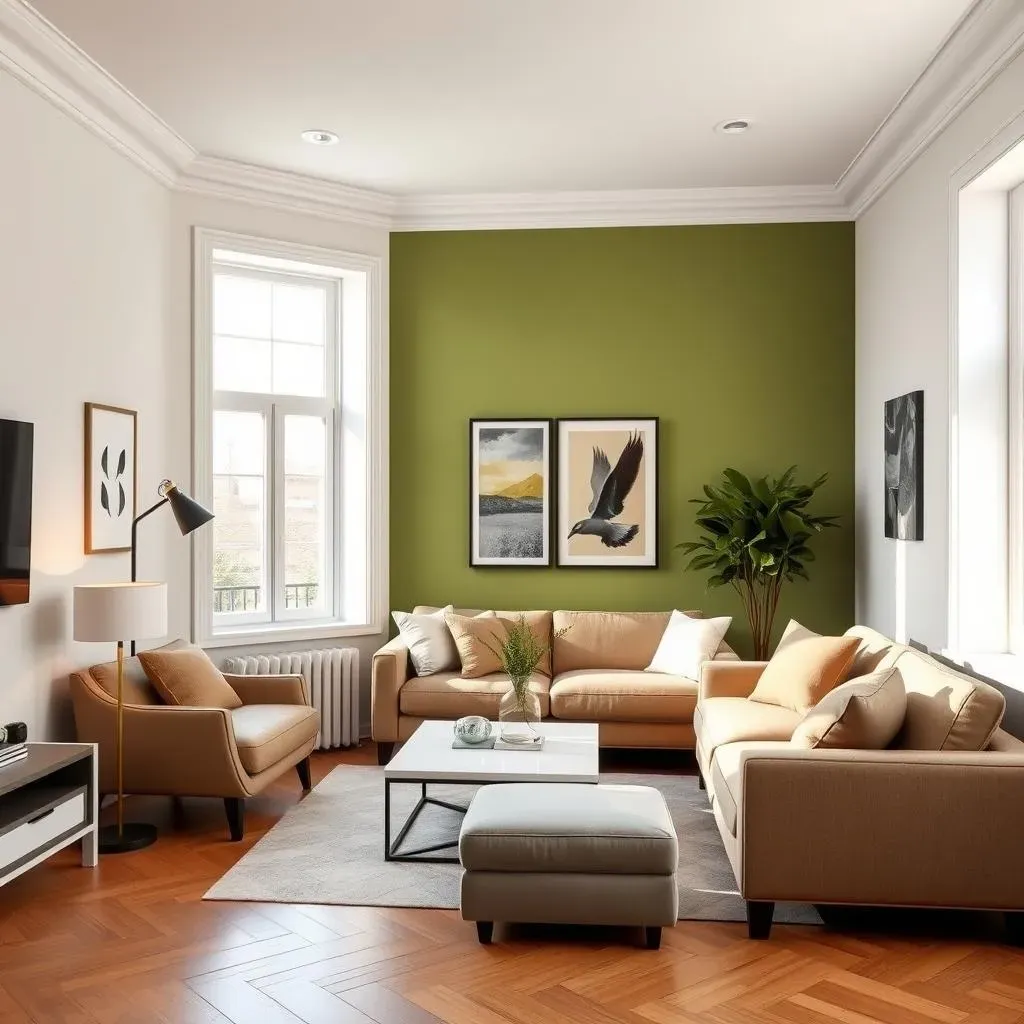Table of Contents
Got a small living room that feels a bit, well, small? You're not alone! Many of us struggle with making the most of limited space, but guess what? There's a simple trick that can transform your room from cramped to captivating: the accent wall. Forget about feeling boxed in, because we're about to explore the world of "accent wall color ideas for small living room" that can make a huge difference. This article will guide you through choosing the perfect hue, whether you're into bold statements or subtle enhancements, and provide you with creative techniques using different materials and methods. You’ll learn how to make the most of your accent wall, creating a space that not only feels bigger but also reflects your unique style. Get ready to say goodbye to boring walls and hello to a living room that's bursting with personality and charm. Let's jump in and find the perfect accent wall for your space.
Choosing the Right Accent Wall Color for Small Spaces
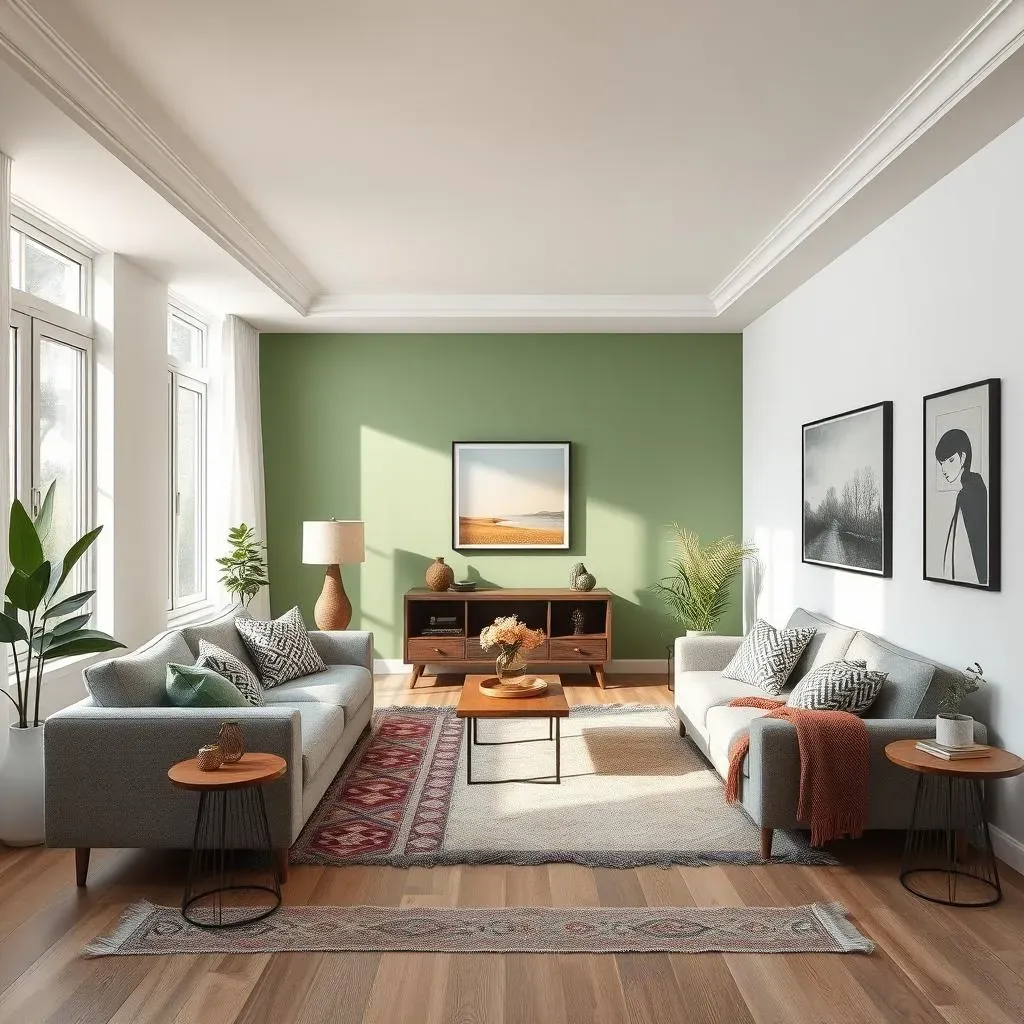
Choosing the Right Accent Wall Color for Small Spaces
Okay, so you're staring at your small living room, wondering how to make it feel less like a box and more like a cozy haven? I get it. The right accent wall color can be a game changer, but it's also super easy to mess it up if you just pick a random color. The key here is to think about how color affects our perception of space. Lighter shades tend to make a room feel larger and more open, which is awesome for small living rooms. Think about colors like soft blues, gentle greens, or even a warm off-white. These colors can trick your eyes into thinking the walls are further away than they actually are. But, it's not just about making the room look bigger, it’s about how you feel in it, right? So, before you grab that paint brush, consider the mood you're aiming for.
Before you jump into paint colors, think about the natural light in your room. Is it a bright, sunny space, or does it lean more towards the shadowy side? If you've got tons of natural light, you can play around with more saturated colors. If your room is a bit dark, stick to those lighter shades that reflect light around the room. Also, don’t forget to look at what you already have in the room. What colors are in your furniture, your rugs, and your artwork? Your accent wall should complement these things, not clash with them. It's all about creating a space that feels balanced and cohesive. It might sound like a lot to think about, but trust me, the payoff is worth it. A well-chosen accent wall color can completely transform the vibe of your small living room.
Color Family | Best for | Why it Works in Small Spaces |
|---|---|---|
Light Blues | Calm and serene spaces | Reflects light, creates a sense of openness |
Soft Greens | Nature-inspired, relaxing rooms | Feels fresh, adds a touch of the outdoors |
Warm Off-Whites | Versatile, adaptable spaces | Creates a clean, airy feel |
Bold vs. Subtle: Accent Wall Color Ideas for Small Living Rooms
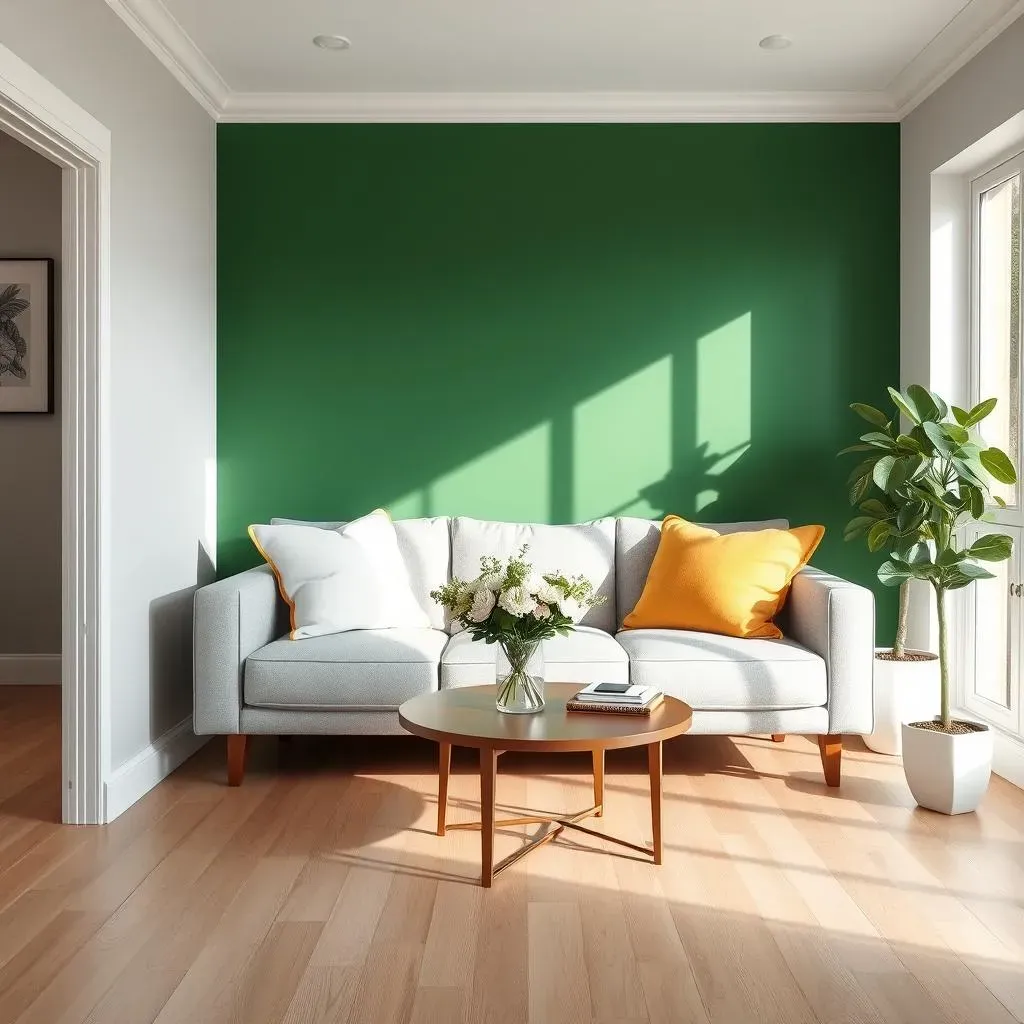
Bold vs. Subtle: Accent Wall Color Ideas for Small Living Rooms
Making a Statement: When to Go Bold
Okay, so you've got a small living room, and you're wondering if you can really pull off a bold accent wall? Absolutely! It's all about knowing when to go for it. Bold colors can add a ton of personality and drama to a space. Think about deep jewel tones like emerald green, sapphire blue, or even a rich, dark charcoal. These colors can make a small room feel super cozy and sophisticated, kind of like a secret hideaway. But here's the catch: you need to balance that bold color with lighter elements in the rest of the room. For example, if you go with a dark blue accent wall, pair it with light-colored furniture and accessories to keep the room from feeling too heavy or overwhelming. It's all about creating a visual contrast.
Another great way to use bold colors is to highlight architectural features. Got a cool fireplace or a unique alcove? A bold color on that wall can really draw attention to it and make it a focal point. Just remember, bold doesn't always mean bright. You can still make a statement with a deep, saturated color that adds depth and warmth without being too flashy. The key is to choose a color that you absolutely love and that fits with the overall vibe you're going for in your living room.
The Power of Subtlety: When Less is More
Now, let's talk about the other side of the coin: subtle accent walls. Sometimes, a quiet approach can make just as big of an impact, especially in small spaces. Subtle colors are all about creating a sense of calm and spaciousness. Think about soft grays, muted blues, or even a very light beige. These colors can add a touch of sophistication without overwhelming the room. The beauty of a subtle accent wall is that it can blend seamlessly with the rest of your décor, allowing your furniture and accessories to really shine. It's like a gentle backdrop that lets the other elements in your room pop.
Subtle accent walls are also fantastic for creating a sense of continuity. If you have a small, open-plan living area, using a subtle accent color can help tie the space together without making it feel choppy. It's all about creating a sense of flow and harmony. And don't think that subtle means boring! You can add interest with texture. Think about a subtle color with a textured paint finish or even a wallpaper with a very delicate pattern. Subtle can be just as impactful as bold, it just depends on your goals and preferences.
Color Choice | Impact | Best Suited For |
|---|---|---|
Bold Jewel Tones | Dramatic, Cozy | Highlighting Features, Creating a Focal Point |
Deep Charcoal | Sophisticated, Modern | Adding Depth, Creating a Dramatic Effect |
Soft Grays | Calm, Spacious | Blending Seamlessly, Creating a Backdrop |
Muted Blues | Serene, Elegant | Creating a Sense of Flow, Adding Sophistication |
Finding Your Balance
Ultimately, the decision between a bold or subtle accent wall comes down to your personal style and the overall feeling you want to create in your small living room. Don't be afraid to experiment and try out different colors. Get some paint samples and test them out on your walls to see how they look in different lighting conditions. And remember, it's just paint! If you don't love it, you can always change it. The most important thing is to choose a color that makes you happy and that reflects your unique personality. It's your space, so make it your own!
Creative Accent Wall Techniques and Materials for Small Rooms
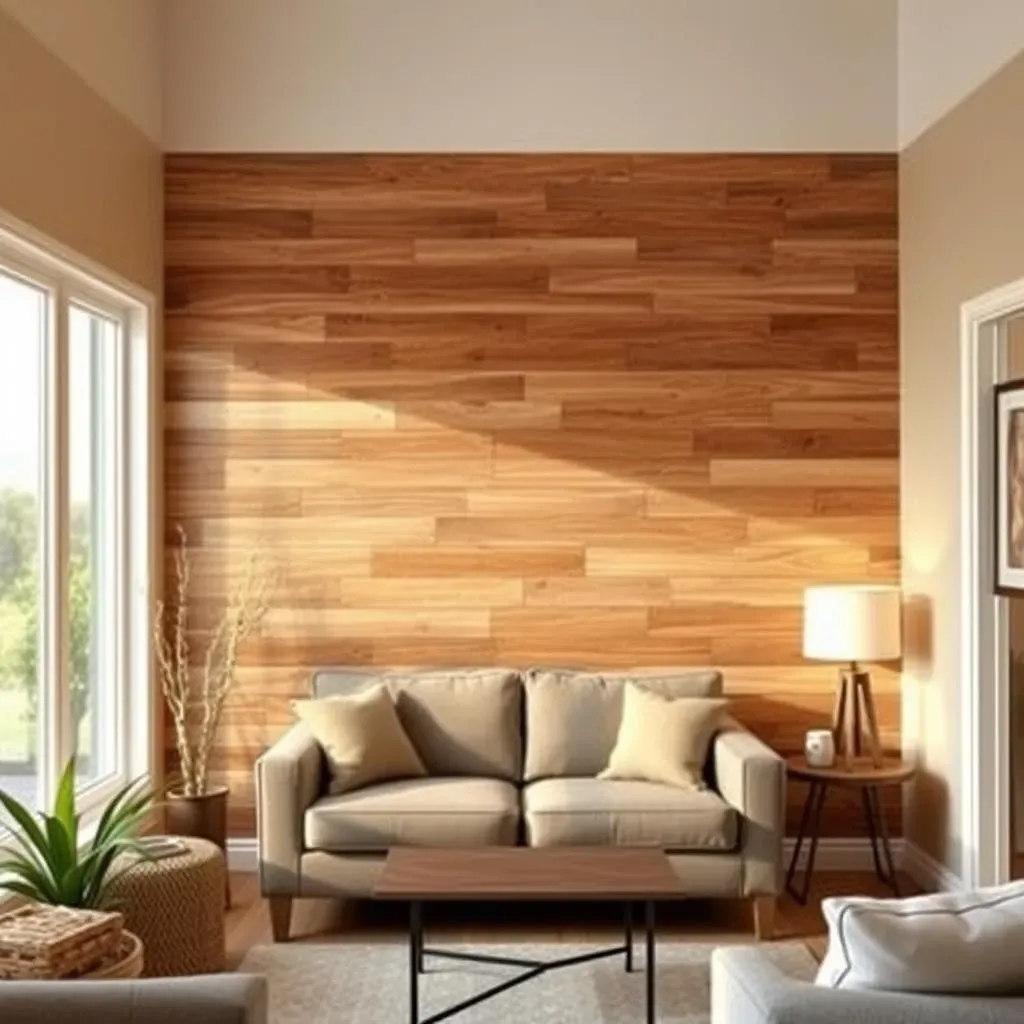
Creative Accent Wall Techniques and Materials for Small Rooms
Beyond Paint: Exploring Other Options
Okay, so we've talked a lot about paint, but let's be real, there's a whole world of accent wall possibilities beyond just slapping on a new color. When you're dealing with a small space, it's all about adding visual interest and texture without overwhelming the room. Think about using wallpaper, for instance. But not just any wallpaper! Consider a pattern with a small scale or a subtle texture that won't make the room feel too busy. I'm talking about things like grasscloth, geometric patterns, or even a minimalist design. Wallpaper can add depth and personality, acting like a piece of art on your wall. And the best part? It's relatively easy to install yourself, saving you some cash.
Another fantastic option is to use wood. I know what you're thinking, “wood in a small room, are you crazy?” But hear me out. Wood can add warmth and a natural touch to your space. You can use reclaimed wood planks for a rustic feel, or thin strips of wood arranged in a geometric pattern for a modern look. It's all about creating a visual texture that draws the eye in. You can even paint the wood for a more subtle approach. And trust me, it's not as complicated as it sounds. With a little planning and some basic tools, you can create a stunning wood accent wall in no time.
Material | Style | Why it Works in Small Spaces |
|---|---|---|
Patterned Wallpaper | Varied, can be bold or subtle | Adds visual interest, can create a focal point |
Textured Wallpaper | Sophisticated, tactile | Adds depth, creates a subtle effect |
Wood Planks | Rustic, natural | Adds warmth, creates a cozy feel |
Geometric Wood | Modern, stylish | Adds visual interest, creates a focal point |
DIY Magic: Easy and Affordable Ideas
Now, let's get into some DIY magic. You don't have to be a professional interior designer to create a killer accent wall. In fact, some of the best ideas are the ones you can do yourself with a little creativity. One super easy and affordable option is to use painter's tape to create geometric patterns. You can make stripes, chevrons, or even more complex designs. It's all about the tape! Just apply it to your wall, paint over it, let it dry, and then peel off the tape. Voila! A custom-made accent wall without breaking the bank. Another idea is to use stencils. You can find a ton of stencils online or at your local craft store. Choose a pattern that you love, tape it to the wall, and paint over it. It's a great way to add a repeating design without having to paint the whole thing freehand. And if you're feeling extra creative, you could even make your own stencils!
And don't forget about using artwork! A gallery wall can act like an accent wall, creating a focal point and adding your personal touch. You can mix and match different styles of frames and artwork to create a unique and eclectic look. The key is to arrange them in a way that feels balanced and visually appealing. You can even incorporate other elements like mirrors, shelves, or even plants into your gallery wall. It's a great way to show off your personality and create a space that truly feels like home. The best part of DIY is that you can customize it to your exact needs and taste.
- Painter's Tape: Create geometric patterns with ease.
- Stencils: Add repeating designs without freehand painting.
- Gallery Wall: Display your favorite art pieces and photos.
- Mirrors: Enhance the feeling of space and light
Making the Most of Your Accent Wall: Tips and Tricks for Small Living Rooms
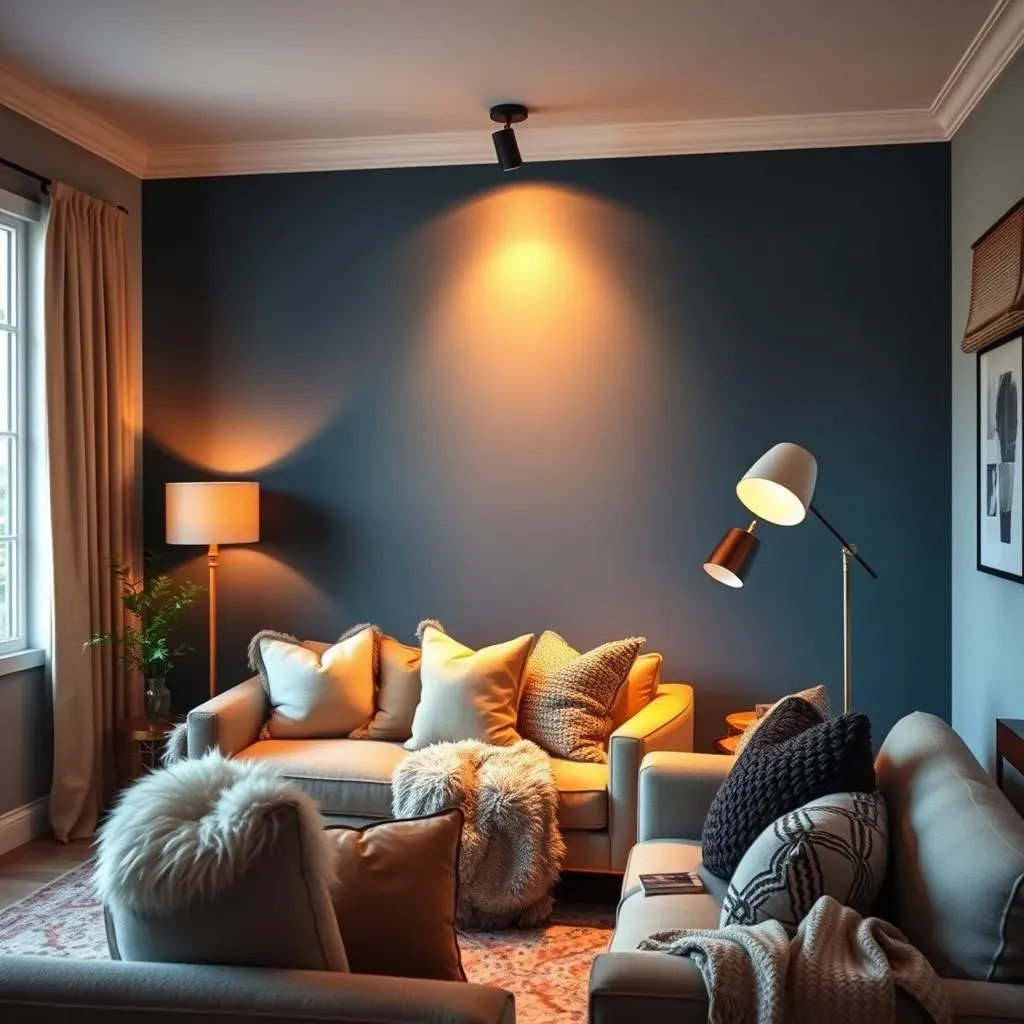
Making the Most of Your Accent Wall: Tips and Tricks for Small Living Rooms
Lighting it Up: How to Highlight Your Accent Wall
Alright, so you've got this amazing accent wall, but it's just sitting there in the dark, not doing its job to its full potential? That's where lighting comes in. It's like the secret ingredient that can take your accent wall from "nice" to "wow!" Think about adding some strategically placed lights to highlight its texture, color, or any cool features you've added. If you've gone for a bold color, a well-placed spotlight can make it pop even more, creating a dramatic effect. For a more subtle approach, consider using soft, warm lighting to add a cozy feel. You can do this with things like wall sconces, track lights, or even a simple floor lamp. It's not just about making the wall brighter, but also about creating an atmosphere that enhances the whole room.
Don't forget about natural light either. If your accent wall is near a window, think about how the light changes throughout the day and how it affects the color. Sometimes, a color that looks amazing in the morning can look completely different in the evening. So, play around with your window treatments to control the amount of light that comes in. You can use sheer curtains to diffuse the light and create a soft glow, or you can use blackout curtains to block out the light when you want a more intimate feel. Lighting is key to making your accent wall work its magic.
Lighting Type | Effect | Best Use |
|---|---|---|
Spotlights | Dramatic, Focused | Highlighting bold colors or textures |
Wall Sconces | Soft, Warm | Creating a cozy atmosphere |
Track Lights | Flexible, Adjustable | Highlighting various areas of the wall |
Sheer Curtains | Diffused, Gentle | Softening natural light |
Balancing Act: Integrating Your Accent Wall with the Rest of the Room
Okay, so your accent wall is looking fabulous, but now you're wondering how to make sure it doesn't feel like it's just floating there on its own? The key is to integrate it with the rest of the room. Think about using colors and textures that complement your accent wall in other parts of the room. For example, if you've got a blue accent wall, consider adding blue accents in your cushions, throws, or artwork. It's all about creating a sense of harmony and flow. But don't be afraid to mix things up a bit either! You don't want everything to be too matchy-matchy. Use contrasting colors or textures to add visual interest and create a sense of balance. It's like creating a visual dance where everything works together in a beautiful way.
And don't forget about the furniture! Consider how your accent wall interacts with your furniture pieces. Is your furniture too close to the accent wall, making the room feel cramped? Or is it too far away, making the accent wall feel disconnected? Play around with furniture placement to create a space that feels balanced and inviting. Also, think about using mirrors to reflect your accent wall and create a sense of depth. A well-placed mirror can make the room feel larger and more open. It's all about creating a space that is both beautiful and functional.
- Color Coordination: Use colors that complement your accent wall.
- Texture Play: Mix and match textures for visual interest.
- Furniture Placement: Arrange furniture to balance the room.
- Mirror Magic: Use mirrors to enhance depth and light.
